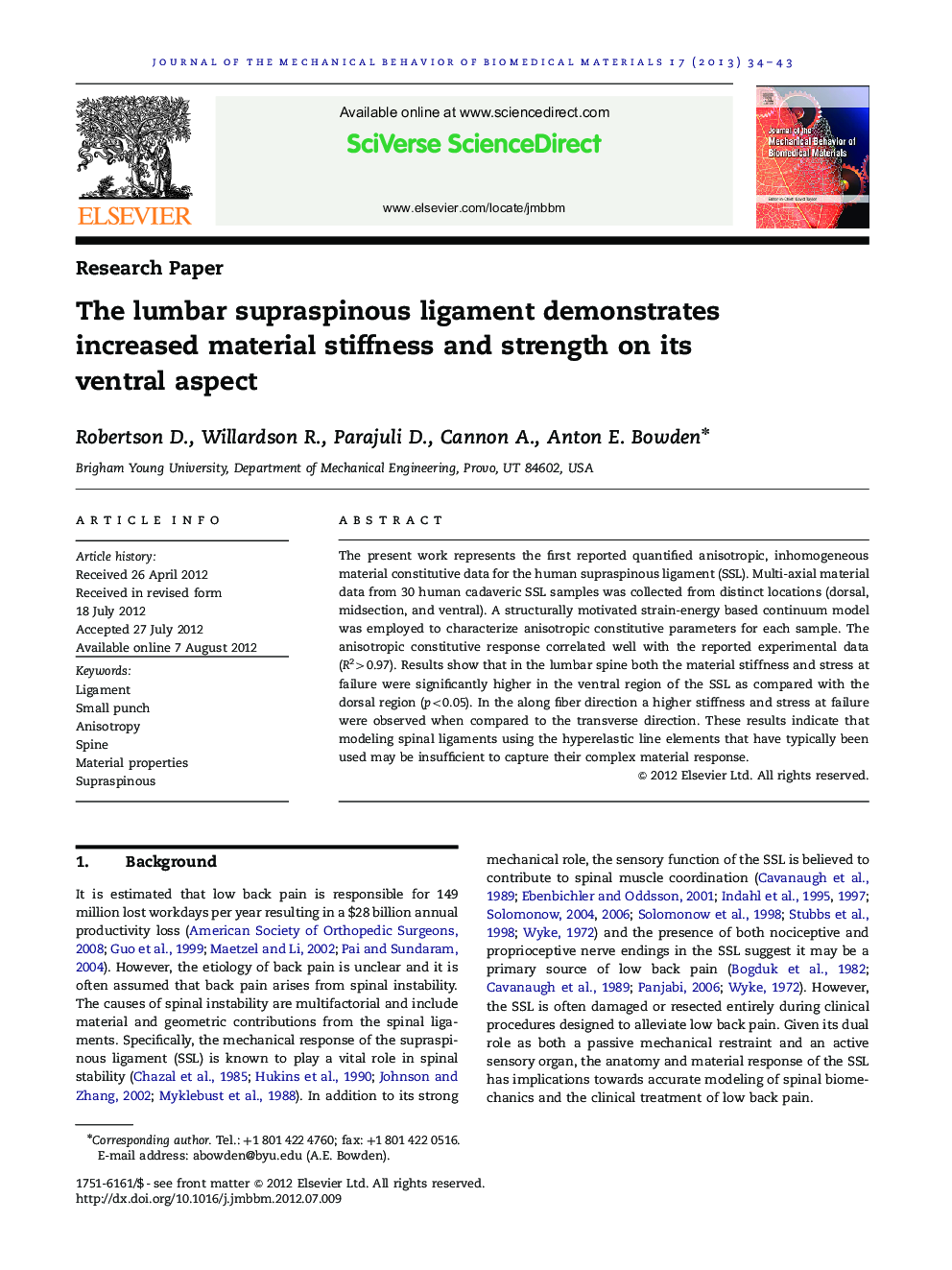| Article ID | Journal | Published Year | Pages | File Type |
|---|---|---|---|---|
| 810965 | Journal of the Mechanical Behavior of Biomedical Materials | 2013 | 10 Pages |
The present work represents the first reported quantified anisotropic, inhomogeneous material constitutive data for the human supraspinous ligament (SSL). Multi-axial material data from 30 human cadaveric SSL samples was collected from distinct locations (dorsal, midsection, and ventral). A structurally motivated strain-energy based continuum model was employed to characterize anisotropic constitutive parameters for each sample. The anisotropic constitutive response correlated well with the reported experimental data (R2>0.97). Results show that in the lumbar spine both the material stiffness and stress at failure were significantly higher in the ventral region of the SSL as compared with the dorsal region (p<0.05). In the along fiber direction a higher stiffness and stress at failure were observed when compared to the transverse direction. These results indicate that modeling spinal ligaments using the hyperelastic line elements that have typically been used may be insufficient to capture their complex material response.
Graphical abstractFigure optionsDownload full-size imageDownload high-quality image (300 K)Download as PowerPoint slideHighlights► First quantified anisotropic, inhomogeneous material properties for the human SSL. ► The SSL exhibits a higher longitudinal stress at failure in its ventral aspect (p<0.05). ► The SSL exhibits a higher longitudinal stiffness in its ventral aspect (p<0.05). ► No significant differences in transverse material properties based on region were found. ► Inclusion of 3D ligament geometry will improve the accuracy of spinal models.
